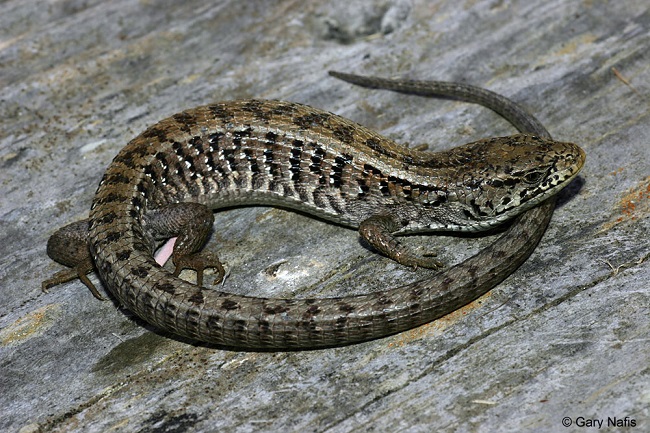Diverse and intriguing, lizards play a significant role in California’s ecosystems. They range from the sprawling deserts to the high sierra, painting a captivating picture of adaptation and survival.
This article aims to provide in-depth knowledge about the different types of California lizards, their habitats, and unique characteristics.

The Diversity of California Lizards
California hosts a wide variety of lizards, each with unique characteristics and adapted to specific habitats. The most common include the Western Fence Lizard, the Southern Alligator Lizard, and the Desert Iguana, among others.
Western Fence Lizard
Known as the “Blue-Belly” because of its vibrant blue and black belly, the Western Fence Lizard is perhaps the most common lizard in California. They prefer grasslands, chaparrals, and woodlands and play an essential role in controlling insect populations.
Southern Alligator Lizard
This lizard species is prevalent in California’s coastal regions and the Sierra Nevada. They have a distinct appearance, with long, slim bodies and small, beady eyes.
Interestingly, they have a unique defensive mechanism – when threatened, they can detach their tail to distract predators.
Desert Iguana
As the name suggests, these lizards inhabit California’s arid desert regions. They have a round body, a long tail, and a greyish-brown color that helps them blend into their surroundings. Remarkably, they can survive in extreme temperatures that other lizards cannot tolerate.
Understanding California Lizards’ Habitats
California’s diverse landscapes, ranging from deserts to forests, provide ideal habitats for different types of lizards. Lizards found in the desert regions, like the Desert Iguana, have developed adaptations to survive the harsh, dry conditions.
On the other hand, lizards in forested and coastal areas, like the Southern Alligator Lizard, are well-suited to cooler, humid environments.
Importance of Lizards in the Ecosystem
Lizards play an integral role in the ecosystem. They control insect and arachnid populations, preventing them from becoming pests.
Moreover, they serve as an essential food source for larger predators. Their role in the food chain helps maintain the balance of ecosystems across California.
Conservation of California Lizards
While many of California’s lizards are not currently endangered, they face threats from habitat destruction, pollution, and climate change. Efforts to conserve these species are critical in preserving California’s biodiversity.
Moreover, as a keystone species, their protection indirectly safeguards many other species that are part of the same ecosystems.
The Adaptable Lifestyle of California Lizards
California’s unique climate and diverse landscapes have led its native lizards to develop fascinating adaptive traits. Here, we will dive deeper into the intriguing lifestyles of some of the most common lizard species in California.
1. Thermal Regulation and Desert Survival
California’s Desert Iguanas are remarkable in their ability to withstand high temperatures, which can reach over 115°F in the desert areas they inhabit.
They manage this by burrowing into the cooler subsurface during the hottest parts of the day, effectively escaping the scorching heat. This also helps them retain the necessary moisture to survive in such arid environments.
2. Diet Diversity
The diets of California lizards are as diverse as the species themselves. For instance, the Western Fence Lizard mainly feeds on small insects and spiders, helping control these populations.
The Southern Alligator Lizard, on the other hand, is known to have a broader diet, consuming everything from insects and spiders to snails and even small mammals.
3. Unique Defense Mechanisms
California lizards have developed a range of defense mechanisms to deter predators. The Southern Alligator Lizard can detach its tail, creating a diversion for predators and allowing it to escape.
Some species, like the Horned Lizard, can inflate their bodies to appear larger and more threatening to potential threats.
4. Mating Rituals and Reproduction
The breeding habits of California lizards are unique and fascinating. For example, the male Western Fence Lizard performs a series of push-ups and displays its bright blue belly to attract females. After mating, the female will lay her eggs in moist soil or under rocks.
Conclusion
California lizards are a testament to the state’s rich biodiversity. Each species, from the heat-loving Desert Iguana to the cooler-region dwelling Southern Alligator Lizard, showcases fascinating adaptability and survival traits.
By understanding and appreciating these incredible reptiles, we can take steps towards their conservation, ensuring they continue to play their critical roles in California’s ecosystems for generations to come.
























